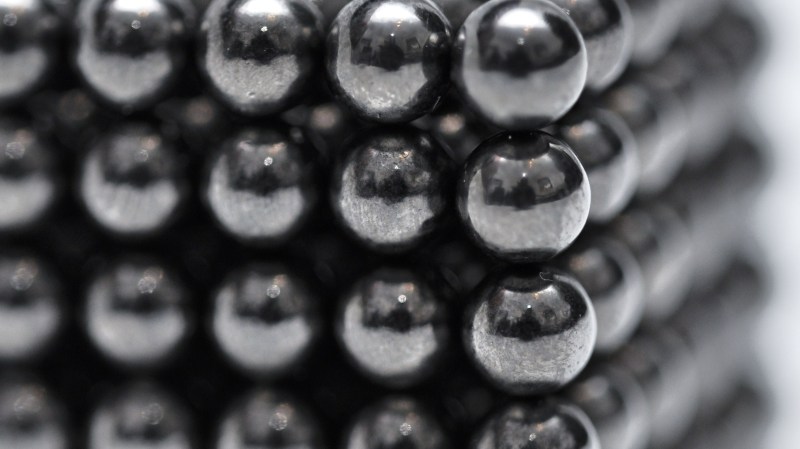Every person who reads these pages is likely to have encountered a neodymium magnet. Most of us interact with them on a daily basis, so it is easy to assume that the process for their manufacture must be simple since they are everywhere. That is not the case, and there is value in knowing how the magnets are manufactured so that the next time you pick one up or put a reminder on the fridge you can appreciate the labor that goes into one.
[Michael Brand] writes the Super Magnet Man blog and he walks us through the high-level steps of neodymium magnet production. It would be a flat-out lie to say it was easy, but you’ll learn what goes into them and why you don’t want to lick a broken hard-drive magnet and why it will turn to powder in your mouth. Neodymium magnets are probably unlikely to be produced at this level in a garage lab, but we would love to be proved wrong.
We see these magnets everywhere, from homemade encoder disks, cartesian coordinate tables, to a super low-power motor.
















Mmmm… magnetic bread…
Don’t try cutting it with a steel knife.
Sticks to a robot’s ribs.
That’s why weight conscious robots will have AC coursing through their veins.
s/veins/wires/
There was nothing in that article about licking magnets. I WANT TO LEARN ABOUT LICKING MAGNETS! Thanks.
really? no one is going to say it? fine, I’ll do it.
Water, fire, air and dirt
Fucking magnets, how do they work?
Miracles all up in this bitch.
Unpaired electron spin.
Someone should tell Violent J and Shaggy 2 Dope so they’ll stop having people ask questions for them.
Interesting. I’m guessing this is the amorphous metal alloy process used to make. They’re made using a process like the metglas is made… reads like… melt spinning: https://en.wikipedia.org/wiki/Melt_spinning
Was wondering what the abundance of neodymium was compared to samarium and neodymium ranks higher than I expected (was thinking lower like samarium):
http://www.chemistryexplained.com/elements/L-P/Neodymium.html
https://en.wikipedia.org/wiki/Samarium
I was expecting a “How It Is Made” style video…. I am very disappointed. I had to fish around youtube to find one myself, but I did find this gem: https://www.youtube.com/watch?v=BHuWloNGo6c
Nice find.
They must be pretty cheap to make in the meantime. They are used as completely disposable latch in cigarette rolling paper packs: a 7*10*0,5 mm sheet metal plate and a round 5mm by 1,5mm Nd magnet disc. After 30 or 50 papers they go into the bin.
I wonder if that might be where the seconds/rejects go.
You can buy 20-50 small ones from eBay shipped for one dollar. So they are cheap.